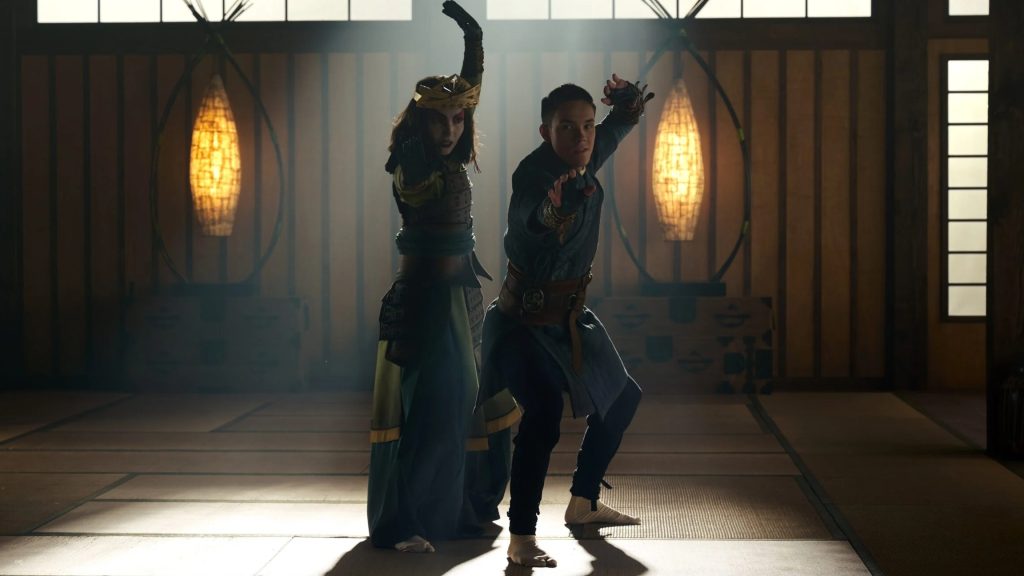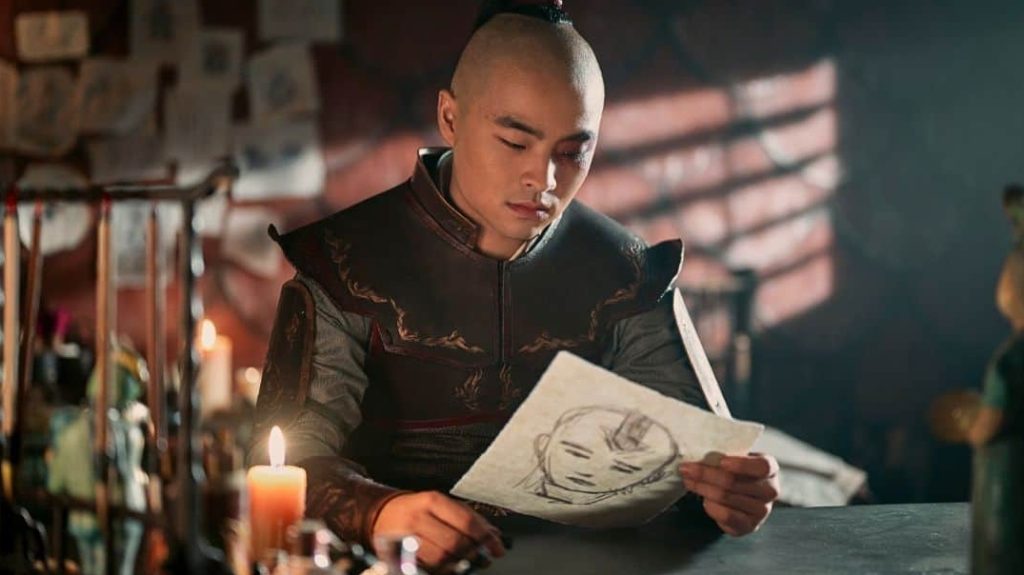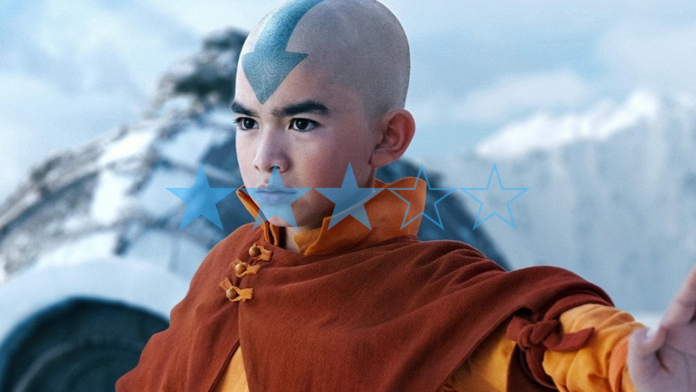Netflix make their best attempt to bring the iconic animation into live-action, but while impressive in its scope, the writing leaves the series feeling flat.
★★★✰✰
Since it was announced, all eyes have been on Netflix as people have waited with bated breath for the arrival of their take on Avatar: The Last Airbender in live-action. Given that the previous attempt by M. Night Shyamalan in 2010 has been the subject of worldwide ridicule from fans and critics alike, Netflix had a hard task ahead of them. Now that their new adaptation is out in the world, it seems that actually, this series is harder to adapt in live action than we give it credit for…
Based on the animated series of the same name, created by Michael Dante DiMartino and Bryan Konietzko, Avatar: The Last Airbender follows Aang (Gordon Cormier), the eponymous Avatar as he grapples with his powers in order to end the war that has ravaged his world for the past century.
This first season introduces audiences to the four nations – the Air Nomads, the Earth Kingdom, the Water Tribes, and the Fire Nation. However, after 100 years of war, the world is in despair, longing for the prophesied saviour – the Avatar; the one who can master all four elements. When Water Tribe siblings Katara (Kiawentiio) and Sokka (Ian Ousley) stumble upon Aang, the trajectory of their lives is forever changed.
When it comes to the series’ world building, the show excels with production design on a grand scale and costume designs that accurately reflect the various cultures the show does. However, as beautiful as it should be, it struggles to feel lived in: clothes are always too neat; many of the huge set pieces use VFX instead of practical pieces, creating a disconnect from the props being used.
From the get-go, the live-action show hones in on the darker, more mature elements of the original cartoon, and constantly wants to remind us that this is a ‘Netflix serialised drama’. As such, it compresses the animation’s 20 episodes into eight hour-long episodes, merging a number of plots. Due to this, the pacing is completely off.The filler episodes have been removed, but somehow, what’s been left feels decidedly slower. A new prophecy is introduced in episode two, in which Aang witnesses the fate of the Northern Water Tribe should he not arrive to save them. While this change was made to give the narrative some drive, it instead casts a shadow of disaster over the whole series, meaning everything feels like a side-quest, with the main spectacle saved for the show’s final two episodes.
The violence depicted is more graphic, such as the previously unseen genocide of the airbenders being shown, and the stakes are higher. What this shift does showcase is the show’s outstanding stunt choreography, designed by Jeff Aro, combining a number of martial arts traditions, and when paired with VFX supervised by Marion Spates and Jabbar Raisani, brings element-bending to glorious, fantastical life. Another technical aspect that adds to this is the brilliant music from Takeshi Furukawa, who uses the original soundtrack as a springboard for a rich, atmospheric score.

The desire to appeal to adults also massively affects the characterisation. Aang is still a child, but this version of him focuses on the character’s survivor’s guilt as his defining trait above all else. While his good humour and radical empathy are still present, his warmth is often eclipsed by his melancholy. Similarly, Sokka’s neuroticism is toned down, and what was originally an arc about unlearning sexism is replaced with an arc about understanding whether he is called to be a warrior. General Iroh (Paul Sun-Hyun Lee) still serves as a comic relief, but his moral ambiguity, which is only hinted at in the original iteration, is far more apparent here. While for male characters these changes add depth, some of the female characters suffer immensely, particularly Katara. Her vibrancy and temper are subdued, with only hints of it beginning to emerge in the show’s final episodes. As such, she feels flatter, and while Netflix sought to lessen the gendered aspects of her character for a modern audience, Katara’s maternal role is significant in understanding her.
That being said, while the characterisation feels lesser, it is made up for by some fantastic casting. From the start, Netflix stated that they would be aiming for a representative cast, reflecting the Asian and indigenous cultures that influenced this story, and they have stayed true to their word. Also, in having a young cast, we feel the weight of this journey on these children’s shoulders. Dallas Liu as Prince Zuko is an absolute stand-out, passionately demonstrating the young prince’s rage, but also unafraid of the vulnerability required to explain why that rage is there in the first place. Much can also be said of the excellent guest stars: Danny Pudi and Utkarsh Ambudkar give themselves fully to the roles of The Mechanist and King Bumi respectively; Sebastian Amoruso breathes charisma and danger into Jet; Tamlyn Tomita asserts authority as the Kyoshi Island mayor; and Lim Kay Siu makes the loss of Gyatso hit that much harder.

However, while the show claims to be more adult, the dialogue treats its audience as children: regularly over-explaining through expository monologues, and very rarely following through with scenes to demonstrate the assertions made. Sometimes it borrows directly from the original script, but without the energy of the animation, the lines feel like a knowing look in a mansplaining way, rather than a playful nod. In fact, the lack of playfulness is one of the show’s greatest flaws, and hugely affects our connections to the characters. It also affects the way we view the connections between them – the narrative splits Aang, Katara and Sokka into separate subplots so often that we never really get to see them interact as ‘Team Avatar’. As such, every time their love for each other is depicted as a crucial motivation, it is hard to believe it.
Weighing the writing against the visual spectacle of the show, the constant question one asks is ‘Who is this for?’ There seem to be too many deviations from the original for fans to be satisfied (changes whose effects will certainly be felt in future seasons), but not enough emotional resonance to hook in new viewers. That being said, there is a glimmer of promise, especially towards the end of the series, and a real sense that the team involved do care about this story.
The Verdict
Impressive action and an attentive cast prevent this lacklustre adaptation from being as bad as its film equivalent. There is plenty of potential in its worldbuilding and characterisation that is yet to be fully realised, but will hopefully be improved should the show get renewed. If anything, it’s a great reminder of how warm, moving, and impressive the original iteration was.
Words by Rehana Nurmahi
Support The Indiependent
We’re trying to raise £200 a month to help cover our operational costs. This includes our ‘Writer of the Month’ awards, where we recognise the amazing work produced by our contributor team. If you’ve enjoyed reading our site, we’d really appreciate it if you could donate to The Indiependent. Whether you can give £1 or £10, you’d be making a huge difference to our small team.
